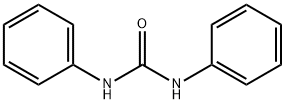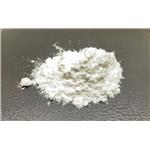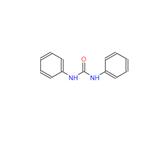Chemical Properties
1,3-Diphenylurea is supplied as a solid. A stock solution may be made by dissolving the 1,3-diphenylureain, the solvent of choice, which should be purged with an inert gas. 1,3-Diphenylurea is soluble in organic solvents such as DMSO and dimethyl formamide. The solubility of 1,3-diphenylurea in these solvents is approximately 30 mg/ml.1,3-Diphenylurea is sparingly soluble in aqueous buffers. For maximum solubility in aqueous buffers1,3-diphenylurea should first be dissolved in DMSO and then diluted with the aqueous buffer of choice.1,3-Diphenylurea has a solubility of approximately 50 ug/ml in a 1:20 solution of DMSO: PBS (pH 7.2) using this method.
Definition
ChEBI: 1,3-diphenylurea is a member of the class of phenylureas that is urea in which one of the hydrogens of each amino group is replaced by a phenyl group. It is present in coconut milk (Cocos nucifera). It has a role as a plant metabolite and a cytokinin.
Production Methods
N,N'-Diphenylurea, carbanilide, can
be produced in high yields by heating 2 mol of
aniline with 1 mol of urea in glacial acetic acid.
Synthesis Reference(s)
Chemical and Pharmaceutical Bulletin, 29, p. 3075, 1981
Chemistry Letters, 14, p. 603, 1985
Tetrahedron Letters, 15, p. 1191, 1974
DOI: 10.1016/S0040-4039(01)82442-4
General Description
1,3-Diphenylurea is a cytokinin compound present in fruit and vegetables.
Biochem/physiol Actions
1,3-Diphenylurea is metabolized by a moderate halophilic Marinobacter sp. isolated from a contaminated ephemeral desert stream bed in Negev desert.






